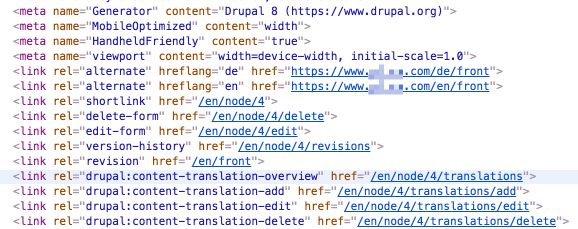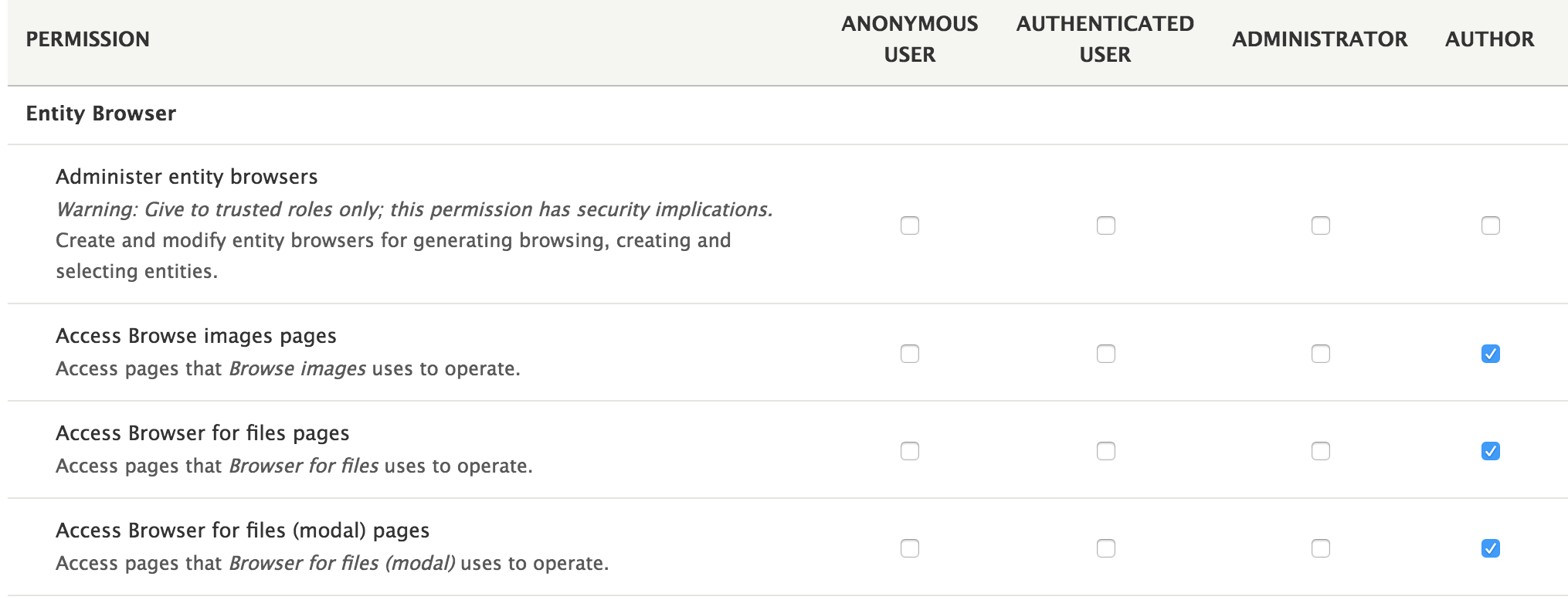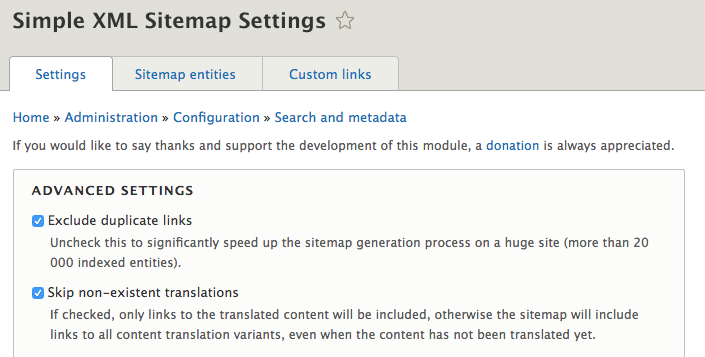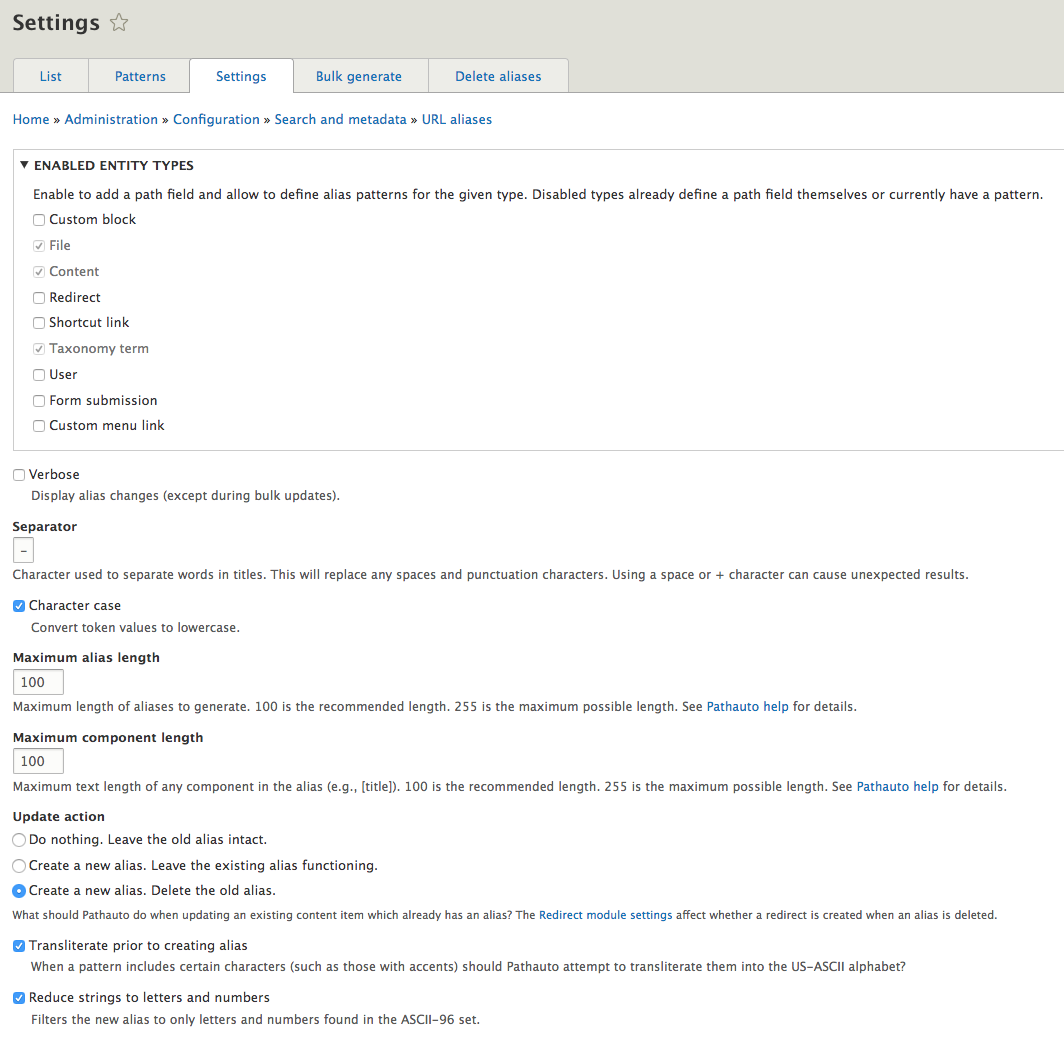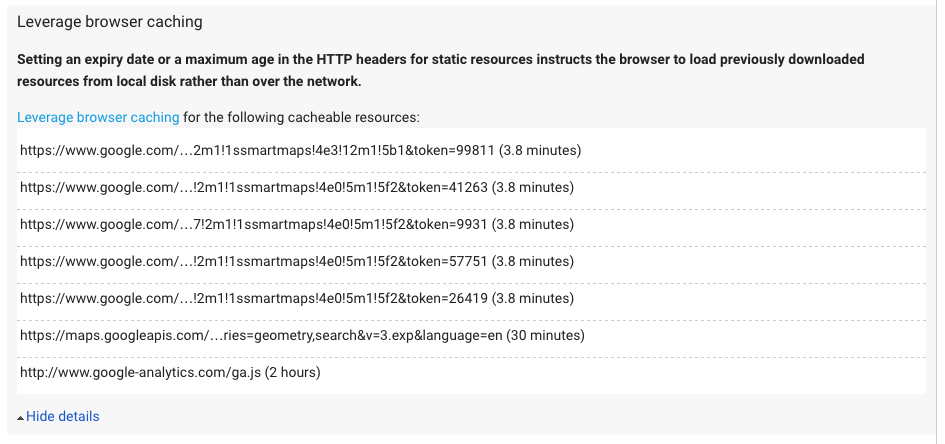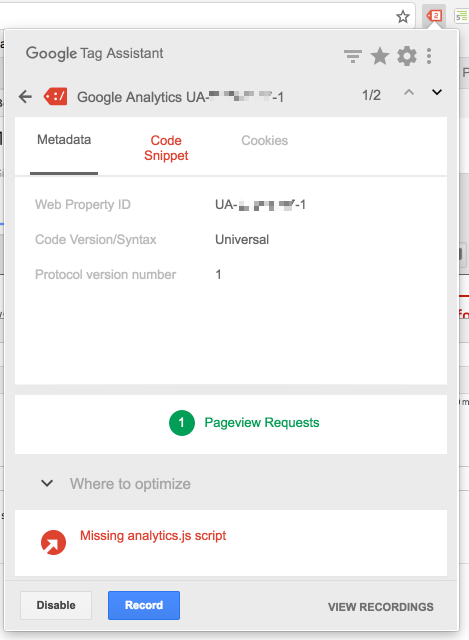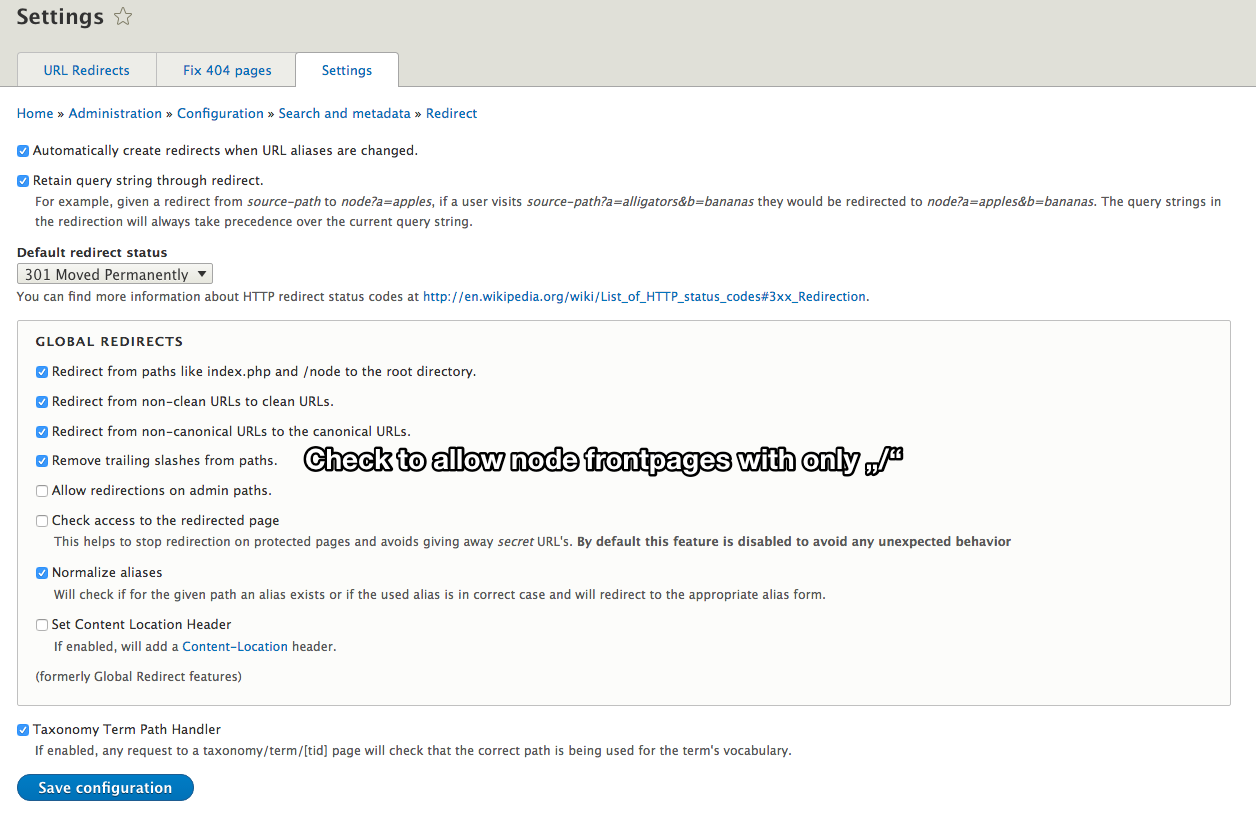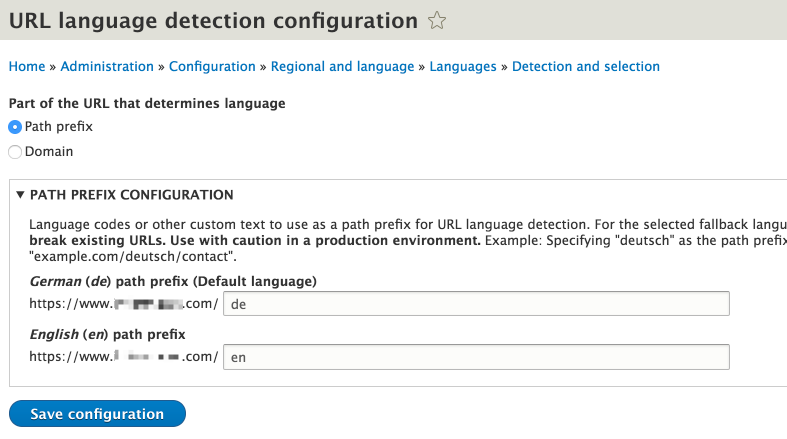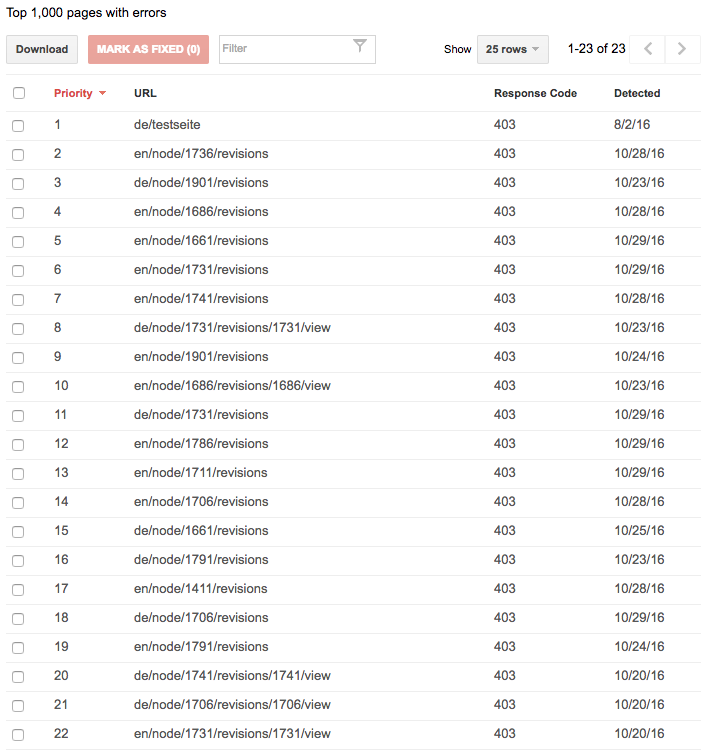WONDROUS Drupal 8 Best Practice 2016
Last update: June 2017
This is a compendium of knowledge we gathered during our trail and errors running Drupal 8 web pages.
We try to address site builder and Developer. Our findings touch
- SEO topics,
- performance and
- ease of development
Always refer to the modules current readme files first, because information on this page may be dated.
As a basic setup: Drupal 8 with local development (mamp, e.g. DevDesktop), remote development, (remote stage/test) and a productive environment. Drupal with Composer setup (e.g. Drupal composer).
At the time of writing, we commit all our vendors and compiled filed (sass, assets, js) to the repository.
A better setup would be to push only setup and sources, available e.g. with Platform.sh or amazee.io. On the server you download and compile everything. Finally rsync to the environment, if the build was successful.
This is a no brainer, but may it be said anyway: always name everything in one language. All your node types, all your fields, every configuration, every form key needs to be in one language (preferably english). From this, you start using translations.
Even if there are no other languages - stick to it. Thinking about what a field may correctly be called in an other language makes you reflect on the actual usage.
Name fields in singular and plural. Give a good clue on what the theme layer can expect from a given variable.
Have a look in the composer.json in this very repository.
- Install module
editorconfigto use the Drupal own indentation. - Install
.ignoreplugin to add default git ignore templates for OSX, Drupal, node and idea files. - Set folders
sites/default/filesto „Mark directory as…“ > „excluded“. So the folder inspection won’t take that long after a file remote sync.
We always had the problem of woff2 files being encoded not correctly. So the Browser would throw a OTS parsing error in the dev tools. Described on stackoverflow
Use the .gitconfig in git root folder — or rather the .gitattributes in the /docroot (/web) — to set correct encoding for binary files. e.g. fonts
*.woff2 binary
*.woff binary
Note: If you edit the .gitattributes in the /docroot (/web), pay attention to your composer updates, which may override the file. See the Disallow Nodes Folder section on hwo to do it.
In order to have a clean front page path, set the front page not only in the backend under /admin/config/system/site-information but also as a path alias. Otherwise you will find in the <head> the node id. This will also be presented on the google hits.
See the screenshot with a wrong path alias set:
Put your personalized themes directly under themes/custom. Not profiles. This will avoid deep folder nesting and prevent Google crawling problems.
Have a thorough look at the robots.txt-file in your project. To crawl your site, google needs to access all important folders and file types.
Think of it like this: Google crawls your page with all CSS an JS. It tries to render the page as nearly as possible as a human user will see it. Thus, even missing fonts will harm your page.
Nodes: Not every node type will have a dedicated full page view. E.g. a contact person or locations, etc. Thus, use the module rh_node to prevent search engines and anonymous visitors of your site, to access those pages. As admin you can still browse this pages.
Notice: If you use translations on a multilingual site, make sure to grant access to the authors of your content. Otherwise, they will have a hard time accessing the translations overview page of a given node.
Taxonomy: You can remove or disable the Taxonomy view, but your taxonomies will still be available via the url taxonomy/term/{id}. To prevent this use the Rabbit hole sub module rh_taxonomy to prevent this pages from being crawled.
By using this method, you are able to allow certain taxonomies and disallow others.
If the bots have already crawled this pages, decide whether to display a 404-page or redirect to front page. It may be helpful to have these extra pages pointing to your front page or even other pages.
After enabling the module entity_browser make sure to give access to your content authors. We (logged in as Admin) tend to forget about that and end up with clients calling you and complaining…
Check the two options „Exclude duplicate links“ and „Skip non-existent translations“.
Outdated: Since the Module now provides a extra field for the "Default base URL" in the settings.
Using simple_sitemap and running a cron job from the command line may create a problem, if your cron job does not run on the very same server. Then you end up with a wrong url in the sitemap.xml.
To prevent this, create a docroot/sites/default/drushrc.php with the following content:
<?php
$options['uri'] = "https://www.mydomain.com/";Alternately , you can run every remote drush cron like this:
$ drush @alias -l https://www.mydomain.com/ cronYou may decide, what is your preferred choice.
Notice: A SEO best practice recommends to limit your path length to 70 Chars.
Definitely use it! But be concise on how to generate your aliases. Allow your content authors and yourself to alway be clear on how the url path will be generated.
E.g. always generate the path for a normal page from its position in the menu plus its Title in the menu. Do not use the very title of the node, but the translatable menu title.
As predefined patterns use something like this, e.g.:
- News
/news/[node:created:html_date]/[node:title] - Page
/[node:menu-link:parents:join-path]/[node:menu-link:title]
From there, you can be sure to always have a lowercase, dash separated and reduced to ASCII character url. so on the Settings page check „Transliterate prior to creating alias“ and „Reduce strings to letters and numbers“
Using the google-analytics-module gives you the ability to cache the analytics.js-file on your own servers. This does not harm your google page speed, instead it makes it better. Why? The caching time of the CDN file will harm your insight score.
If you use the browser plugin Tag Assistant you will be confronted with a false positive. Everything works fine.
In the .htaccess-file add cache header like this:
<IfModule mod_headers.c>
Header set Connection keep-alive
Header set Cache-Control "max-age=1209600, must-revalidate"
<filesMatch "\.(html|htm)$">
Header set Cache-Control "max-age=7200, must-revalidate"
</filesMatch>
</IfModule>
Using twig, think about not only clicking on the very right to open in a new tab. There is also a difference, when clicking at the very left plus icon vs. the „label“. The first will open the nested tree all the way. The click on the label will only open the first level.
** Note Outdated **: this is an older version of the module. Currently it does provide this option by default.
If front page is a node and the redirect module is enabled, make sure to set the checkbox „Remove trailing slashes from paths.“ Otherwise you will end up in a „Too many redirects“ error on the front page.
When we commit everything to the repository, we have the following process. After $ composer update and pushing everything to the servers run:
$ drush @alias -y updb
$ drush @alias -y entup
$ drush @alias locale-update
$ drush @alias -v cronFor the tasks above you can use a the little bash script in this repository called d8up.
To copy it to your user folder and set it executable, run this inside the repository:
$ cp d8up.sh ~/ && chmod u+x ~/d8up.sh Then to execute a remote update:
$ ~/d8up.sh @cloud.alias- Set dev and stage environment directly to
masterbranch. So only prod will use git Tags. - use server side cron runs (only on prod) instead of drupal db triggered cron run
To delete every git tags from the year 2015 on the remote:
$ git tag -l | grep ^2015 | xargs -n 1 git push --delete originThen clean up your local git repository:
$ git tag -l | grep ^2015 | xargs git tag -dFetching values in twig and with the Drupal 8 view modes can be quite challenging some times. So for easy field types — instead of drilling into the render array — use the methods getValue or getString of your Types.
getValue will return an array with a key called value. Haven’t found a solid use case for that.
getString will return the fields values as comma separated list. Quite usefull, I think.
so use
{{ content.field_text['#items'].getString }}
instead of
{{ content.field_text[0]['#markup'] }}If you need to cycle through a list of items in a field, use the getItterator method:
{% for item in content.field_text['#items'].getItterator %}
{{ item.value }}
{% endfor %}Alternatively you could do this to takle caching and get a itteratable array of your render arrays:
{# just trigger the caching once. Do not omit this! #}
{% set catch_cache = content.field_references|render %}
{% set contentList = {} %}
{% for key, value in content.field_references %}
{% if key starts with '#' %}
{# leave blank #}
{% else %}
{% set contentList = contentList|merge({(key): value}) %}
{% endif %}
{% endfor %}
Example: You have an entity reference, out of which you want to build a custom anchor tag — instead of using the field template.
Go to manage display and the desired view mode. For the referenced field set the format to label and link to the reference.
Then in the corresponding twig file you can do:
<a href="{{ content.field_reference[0]['#url'] }}" class="button">
{{ content.field_reference[0]['#title'] }}
</a>No preprocessing needed.
Used for menus and language switches the links.html.twig will contain by default a hreflang attribute not only on the anchor tag, but also on the parent li element. This will cause a html validation error. To avoid this, copy from stable the /navigation/links.html.twig and replace line 44 with:
<li{{ item.attributes.removeAttribute('hreflang') }}>See the bug report #2454289: Attribute hreflang not allowed on element li at this point
For more functions on the attributes see Using attributes in templates
To get the current path of the theme use directory (equals e.g. /themes/mytheme) instead of the @themealias (equals e.g. /themes/mytheme/templates).
To get the current theme use the active active_theme() function. E.g.
{{ attach_library(active_theme() ~ '/code_snippet') }}
With this change record #2616756: Allow instantiating Attribute objects within Twig you are able to create your own attributes variable on the fly.
You can inline SVG files directly in twig, e.g.
{% include directory ~ '/svg/' ~ item.content['#markup'] ~ '.svg' %}
- Use a certain class, like
.rt, for all content coming from rich text editors. So you can style lists (ulandol) coming from rich text editors accordingly. Meaning: Scoping your css. - Prefix Javascript related classes with
js-. There will by no styling applied to those classes. This will help, to later identify which events are bound to DOM elements.
If you use the meta-tag in the header to create JS sprites via css, add at least the attribute name and content to it. This will reduce html validation errors.
This technique comes from the foundation css to js media query value transport.
Place your node_modules in the repository root folder. So your grunt and gulp etc. files as well.
For grunt pointing to an other folder use:
grunt.file.setBase('docroot/themes/my_theme');For gulp add this to the top:
process.chdir(yourDir);
var gulp = require('gulp');Drupal behaviors will come in handy when working with the big-pipe-module or the refreshes-module.
Include fonts into your own theme. Don’t use the CDN because the caching (normally set only to hours) may be hurting your page speed. Include the style definitions directly as a block in the head.
and before the closing </body>
<link rel="stylesheet" href="//fast.fonts.net/t/1.css?apiType=css&projectid=123456" media="all">Make sure to have only one domain you serve. Otherwise redirect with 301 to the main domain.
Only have one singe <h1> on your page. Set hidden menu headline to max <h3>. Give them meaningful name. They will be displayed in search results.
If the style of your headlines are uppercase, make sure to teach the content Manager to NOT provide the Headline in UPPERCASE in the backend. Eventually, your content will be scraped and presented in other places (e.g. social media) without your own styling. Then the correct typography is important.
If your content manager are not bound to modules like pathauto for url generation: URLs should be preferably in lowercase. As a separator Google favors dashes (-) instead of underscores (_) or dots (.). Definitely avoid using empty spaces (will be converted to %20).
Force language folders and redirect to them. Remove trailing slashes. See redirect-module and force redirect to canonical urls and language prefix for every language (e.g. www.mydomain.com/en). Trailing slashes may produce duplicate content warnings.
In your robots.txt make sure you have this line, to prevent search engines to crawl your „ugly“ urls. Always use pretty url structures not longer than around 70 characters.
Disallow: /node/
Note: In your composer.json add the robots.txt like your .htacces to the exclude information.
"drupal-scaffold": {
"excludes": [
".htaccess",
"robots.txt"
]
}Further readings:
Notice: After some time you will find the Google search console complaining about crawling errors. those are false positives:
If you (for any reason what so ever) have active themes situated under the profiles-folder and user assets like fonts, make sure to allow them in the robots.txt, too.
Allow: /profiles/*.woff
Allow: /profiles/*.woff2
Allow: /profiles/*.eot
Allow: /profiles/*.ttf
Preferably move them away from there.
—
http://blamcast.net/articles/drupal-seo
https://yoast.com/duplicate-content/
https://www.agiledrop.com/blog/top-21-drupal-seo-modules-optimize-your-website
